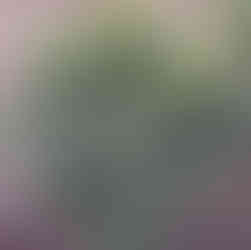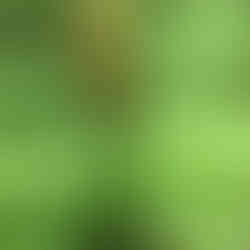Gorgeous Garden Planting: Can It Be Done With Natives?
- Nuts for Natives
- Sep 1, 2021
- 4 min read
Updated: Sep 6, 2021
Replicating a lush bed in natives.

I came across this stunning raised bed planted with deciduous trees, evergreens, shrubs, perennials and ground covers at Washington DC's National Cathedral. It caught my eye because after weeks of hot August temperatures, this bed looked fresh, interesting and different. The best thing about this combination of plants is it does not rely on flowers to look good; it's the foliage and texture that draw you in. Creating interest with foliage gives the planting much more staying power through the growing season and there is winter interest too.

This garden is planted with a few natives, cultivars of natives and ornamentals but could easily be planted with only natives. The area is in a beautiful courtyard centered by a water sculpture and patio. It is sunny part of the day and shady part of the day. The bed has irrigation and is presumably quite warm because of all the surrounding stone.
The Evergreens
At the very back of the bed, there is a row of ornamental, non-native boxwoods and a holly tree. Inkberries make great native substitutes for boxwoods. While boxwoods lend themselves to being pruned into all sorts of shapes like the cones at the back here, inkberries are naturally vase shaped. Native American holly could easily substitute for the ornamental holly tree.
The Deciduous Trees
Dogwood trees anchor the bed. Four are dotted through the curving bed. Along with their iconic blooms in spring, native dogwoods (Cornus Florida) have orange and red fall colors and bright red drupes holding seeds. Once the trees mature, they have a very graceful branch structure in winter.
The Shrubs

The dogwoods are underplanted with oakleaf hydrangeas (Hydrangea quercifolia) native to the southeastern US. What a great choice for four seasons of interest. The minty colored unfurling leaves of spring give way to the white panicle blooms in early summer. The shrubs in fall can be spectacular with colors ranging from oranges and reds to dusky maroons and purples. After the leaves fall, the papery exfoliating bark of their branches appear. A true four season plant.
In this planting, these shrubs are adding this stark textural contrast to the other perennials. The large leaves are completely different.
The Perennials

Hairy alum root (Heuchera Villosa 'Autumn Bride'), a cultivar of native coral bells, is woven throughout the bed. This is a 2 to 3 foot high and wide plant that is semi-evergreen in central Maryland and south. It requires no maintenance, provides ground cover year round and has a long bloom season for flowers from late July through September and occasionally into October. While it is blooming here, even without flowers, this perennial checks a lot of boxes. It grows in full shade to part sun.
There is also another cultivar of coral bells with pink flowers growing between the 'Autumn Bride.' Native coral bells (Heuchera Americana) would work well too.

Three types of ferns fill in between perennials in this bed: taller ferns at the back, an average height fern in the middle and a slightly shorter fern in the front. I can't identify these ferns but a number of native ferns would work very well in this garden.
For the shorter fern, you could use hay scented fern (Dennstaedtia punctilobula). For the mid-height fern, Christmas fern would work well. It is semi-evergreen and can tolerate dry conditions. While it is typically a shade plant, in this planting where trees and shrubs provide some shade, Christmas fern (Polystichum acrostichoides) should do well. For the taller fern, cinnamon fern (Osmundastrum cinamonium) would make a good addition.

Solomon's seal adds a completely different shape in this bed. Arching stems contrast so well with the mounding perennials and upright ferns. This is variegated solomon's seal (Polygonatum odoratum var. pluriforum) native to Europe and Asia. Native smooth solomon's seal (Polygonatum biflorum) which has solid green leaves would still provide the arching shape which seems key here. Like the non-native, smooth solomon's seal has small white flowers in spring.
The dark, inky color of this cultivar of lenten rose (helleborus orientalis) really punctuates the front of this bed. The foliage is a complete contrast to all the green color. Lenten rose also blooms in late winter or early spring. I don't know of a native substitute for hellebores that blooms so early. To get that dark contrast in spring, summer and fall though, a coral bells cultivar with darker leaves, such as coral bells 'Frosted Violet' (Heuchera 'Frosted Violet') would work.

The ground covers
Two ground covers are used at the front of the bed between the perennials: foamflower (Tiarella cordifolia), a native, and European ginger (Asarum europaeum), a non-native. Native wild ginger (Asarum canadense) is the perfect substitute for European ginger. European ginger has smaller glossy leaves while wild ginger has larger matte heart shaped leaves.
This garden also looks so good because there is very little bare ground helping to retain moisture in the soil and practically eliminating the need for weeding. Underplanting trees with shrubs is much easier when the trees are smaller as the dogwoods here are.
I am so taken with this I am going to try to replicate it on a smaller scale with natives in an area where we have a very small dogwood tree. Removing a large Norway maple recently changed the very shady area to a part sun situation that is stressing the shade loving plants. While I am not expecting National Cathedral caliber results (!), I will let you know how it goes.

In the meantime, I hope this special spot among many on the gorgeous grounds of the National Cathedral gives you ideas too. Happy Gardening.















































Comments